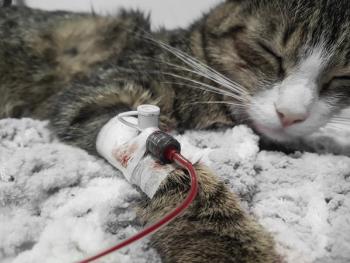
- dvm360 November 2021
- Volume 52
Coming up: Pitfalls in Canine Socialization

Don’t let these pitfalls stand in the way of canine socialization goals.
The socialization of dogs is a hot topic in the veterinary industry, according to Christopher L. Pachel, DVM, DACVB, CABC. In a Fetch dvm360® session, Pachel will present the idea that not all techniques are equal because not all canines are the same.
As the lead clinician and owner of Animal Behavior Clinic in Portland, Oregon, Pachel is well-versed in providing clients with the best solutions for their pet’s behavioral challenges.
“When questioned, many pet owners, trainers, and veterinary team members can list examples of what types of exposures should be included in a socialization program, such as dog-dog play, exposure to children, access to novel objects, and navigating various physical environments,” he says.
These exposures may be adequate when viewing socialization through a general lens. However, expand that lens slightly wider and additional windows of opportunity for influencing this developmental stage can be seen. They include genetic influences, prenatal effects, impacts of exposure during the neonatal period, and the behavioral outcomes of ongoing learning.
“This broader lens highlights the aspects of neural and behavioral development that occur both before and after the primary socialization period that typically receives most of the attention within this conversation,” Pachel says.
The primary socialization period, he continued, includes the development of motor coordination, seeking out nonmaternal interactions, and making primary associations with physical and social environments. When this process happens smoothly, a puppy is considered socialized.
Recognizing potential roadblocks and their biological or environmental causes can help clinicians tailor a behavioral plan for a patient’s specific needs, Pachel says.
Insufficient socialization
In children, the deprivation of sensory input during pivotal developmental stages can be correlated to disturbances in social and emotional functioning and limbic alterations. This deprivation also shows through patterns of social withdrawal, pathological shyness, explosive emotionality, and the inability to form typical attachments.
Pachel asks, “Could these same outcomes occur for puppies who experience similar deprivation?”
According to foundational studies of canine behavior and socialization, deficits through the age of 14 weeks are likely to be associated with long-term changes in social behavior.
Those alterations can be specifically correlated with the area of social deprivation (intraspecific, interspecific, and environmental). Interestingly, he pointed out, more recent studies confirm that contact with specific groups of individuals, such as children, during the developmental period from 3 to 12 weeks can help protect against problematic behaviors such as canine aggression or problematic excitability.
To help guide this process for pet owners and animal caregivers, additional studies have quantified the amount of socialization at which these exposures influence long-term social outcomes.
Trauma
“While there is much research yet to be done on the topic of experiential trauma for developing dogs and puppies, taking a closer look at parallel studies of human development highlights the impact of adverse childhood experiences (ACEs) and the behavior patterns that are more likely to occur in the humans who experienced them during key developmental windows,” he says.
For humans, ACEs —such as emotional abuse, physical neglect, or exposure to household mental illness—can be associated with an increased vulnerability to stressors and the development of negative mental health. Those early exposures predict later susceptibility to impaired health and functioning through systems and pathways that also exist within canines and other domestic animals.
Conditioned arousal
Learning can influence the development of canine behaviors associated with increased arousal. And that arousal can subsequently influence both behaviors and the processes of emotional regulation and learning.
“With repeated exposure to situations in which emotional tolerance is exceeded or the animal is reinforced for displaying behaviors associated with increased arousal, it is possible to influence the speed, intensity, duration, or latency to the recovery of so-called reactive behaviors,” Pachel explains.
For more information about “Pitfalls in Canine Socialization”, join Pachel Friday, August 27, 2021, in his Fetch dvm360® CE session, 1:15 PM-2:15 PM.
Articles in this issue
about 4 years ago
National Pet Diabetes Month: Raising awareness and making stridesabout 4 years ago
A breakthrough joint supplement for dogs and catsabout 4 years ago
Dental Pain and Inflammation—Acute and Chronicabout 4 years ago
Veterinary technicians embrace their rolesabout 4 years ago
Understanding and diagnosing canine hypothyroidismabout 4 years ago
Embark Veterinary releases first-ever purebred dog DNA kitabout 4 years ago
Zoetis adds digital cytology testing to Vetscan ImagystNewsletter
From exam room tips to practice management insights, get trusted veterinary news delivered straight to your inbox—subscribe to dvm360.




